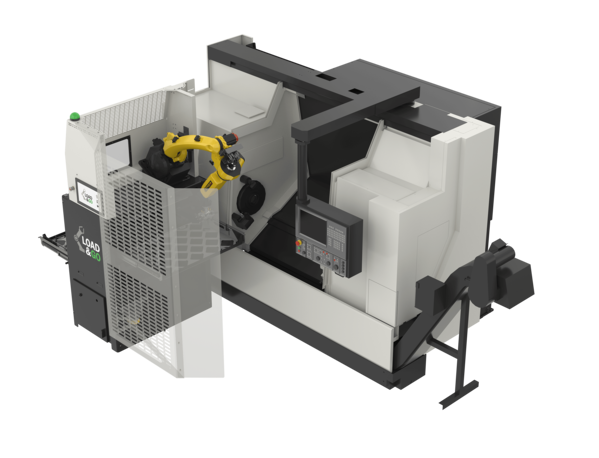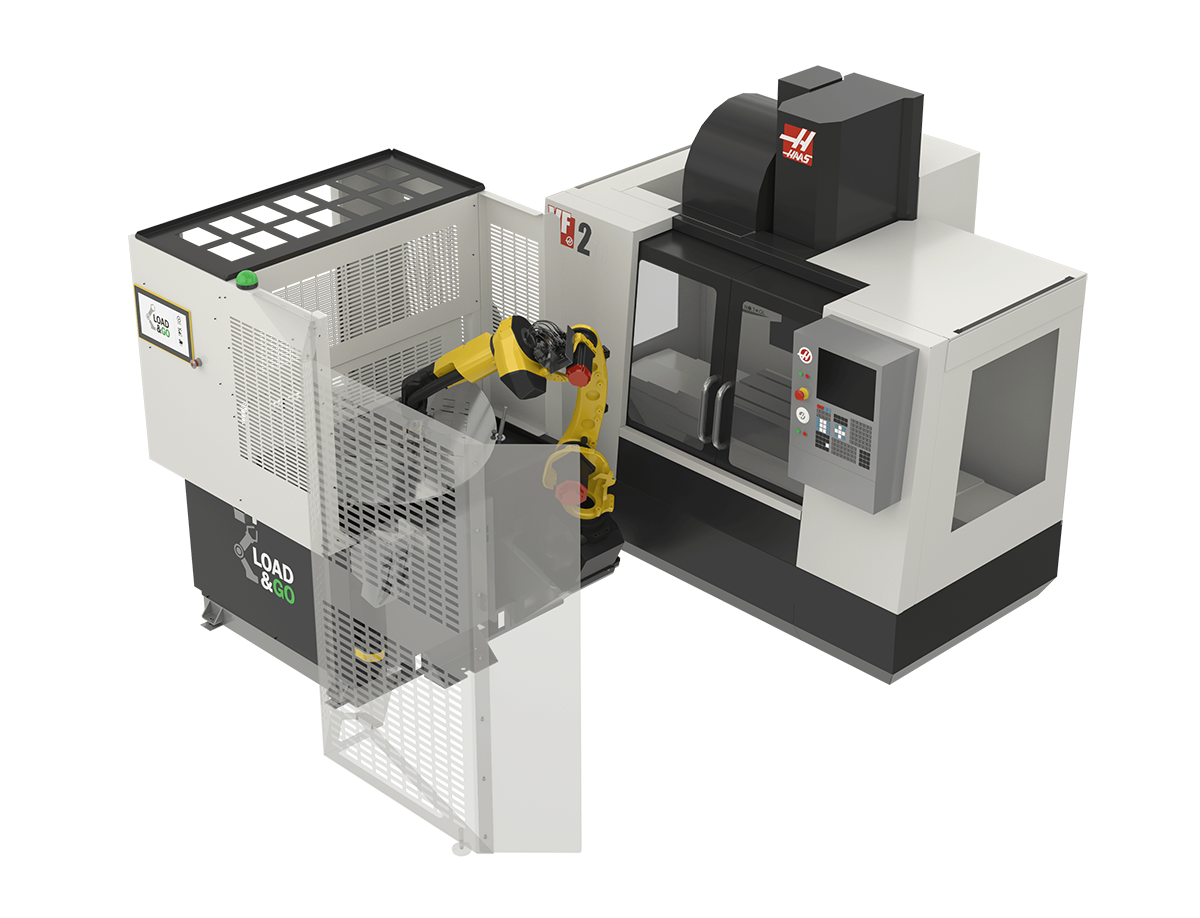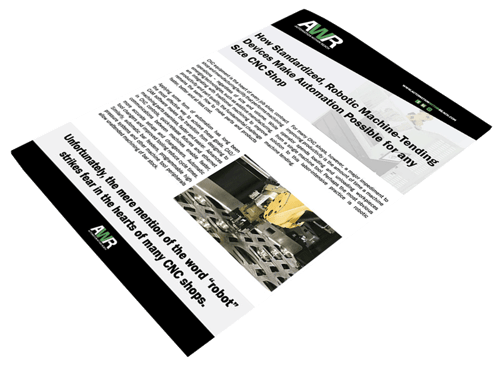This whitepaper delves into the several facets of machine tending that automation can improve as well as a few common misconceptions that would hinder one's consideration of robotic automation.
CNC equipment is the heart of every job shop, contract shop and manufacturing facility that performs machining operations – regardless of size and volume. While emerging technologies, such as additive manufacturing, are integrating with traditional machining to improve productivity and part quality, the fundamental challenge remains the same: How to make parts and products faster, better and at less cost.

Applying some form of automation has long been the most effective way to achieve these goals. CAD/CAM software makes the transition from designing to machining parts seamless, faster and easier. Advances in CNC controls, quick-release fixtures and ethernet communications between machines enable faster, more accurate setups and changeovers. Automatic tool changers and improved tooling reduce cycle times. Similarly, automatic bar feeders, programmable high pressure systems and other machine tool peripherals allow unattended machining of bar stock.
For many CNC shops, however, a major impediment to improving productivity is the amount of time a machine operator spends loading and unloading workpieces from a single machine tool. Perhaps the most obvious solution to this labor-intensive practice is robotic machine tending.
Fact is, standardized, self-contained robotic machine-tending systems are compact, affordable tools that enable any size CNC shop to automate the loading and unloading of workpieces. Although these machines require less space and investment, they share many of the same advantages of custom robotic automation systems:

![]()
Robots never take breaks, vacations or sick days. They are never distracted by other activities. Once set up, they continuously load and unload workpieces until a job is completed – without the need for operator intervention. This frees the machine operator to perform other workplace activities including tending multiple CNC machines instead of just one.
![]()
Today’s robots are proven to operate flawlessly for extended periods of time. They are designed specifically for continuous, repetitive operation. With minimal maintenance, the robot arm will do its work with no complaints or hesitation for years.
![]()
CNC machine tools from major OEMs are more capable than ever before. In addition to robust construction, they incorporate many features that insure accurate, repeatable results. However if a workpiece isn’t loaded precisely, product quality will slip. A robot loads each workpiece exactly the same way, every time for consistent part quality.
![]()
Customer demands and part specifications will change, and new job orders will come in. Throughout, your robotic load/unload system allows you to quickly make any necessary changes. In addition, because your machine operators aren’t tethered to just one machine, you have additional manpower without adding more personnel.

Let’s face it: The image of robotic automation in the minds of many CNC shop owners is that of highly sophisticated systems that require a major investment in equipment, training, highly-skilled personnel, and a long wait for any return on investment. The facts provide a much different picture:
![]()
One of the greatest misconceptions about using automated robotics systems to load and unload parts is that they require a degree of expertise beyond the capabilities of a small-to-medium size CNC shop. In fact, much like bar feeders and other machine tool peripherals, the new generation of self-contained machine-tending devices can literally be wheeled onto the shop floor, self-installed next to the machine tool, setup by a CNC machine operator with no formal training, and begin loading and unloading parts in a few hours.
![]()
A traditional robotic system typically requires advanced programming skills. However, AWR's self-contained machine-tending systems require no robotic programming skills. A menu-driven HMI makes setups and changeovers as easy as following touchscreen prompts to enter basic data, while how-to videos on the same HMI provide a visual guide that shows the operator precisely what to do. No special training or advanced programming knowledge is required.
![]()
Many CNC contract and job shops run a variety of production runs, many of which may have low-to-mid volumes and often include a high mix of parts. The good news is that this new generation of CNC machine-tenders are ideally suited to these scenarios. Because of the user-friendly HMI that eliminates conventional programming, changing from one job to another is quick and easy. AWR's machine tending robot system, for example, handles a wide range of part sizes and IDs and ODs. The part drawer unit has a unique template that easily adjusts to the workpiece size, eliminating the need for special pre-load and unload fixtures. Changeovers take less than 10 minutes. This means a machine operator can easily move from one part run to another and then tend other machines while the robotic automation system does all of the loading and unloading.
![]()
These compact machine-tenders have a small footprint that include a safety fence to protect workers, and a series of sensors that stop the robot arm’s motion if anyone approaches the load/unload area. Moreover, machine operators are spared the tedious loading and unloading activities that can lead to repetitive motion injuries.
![]()
AWR's self-contained machine-tending robots are affordably prices, can be easily self-installed and requires no advanced programming skills. Because these units are up and running quickly, CNC shops enjoy a fast return on their investment.
![]()
Visit Automation Within Reach to view some videos that demonstrate just how easy it is to install, set up and operate a self-contained robotic machine tender
This whitepaper delves into the several facets of machine tending that automation can improve as well as a few common misconceptions that would hinder one's consideration of robotic automation.
